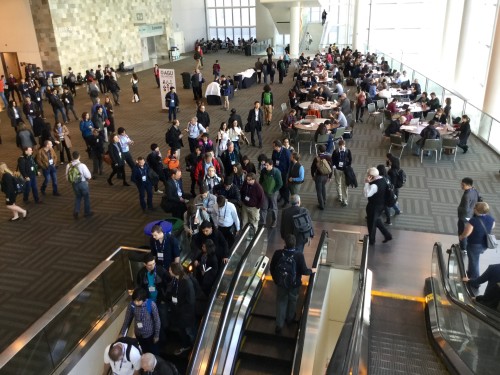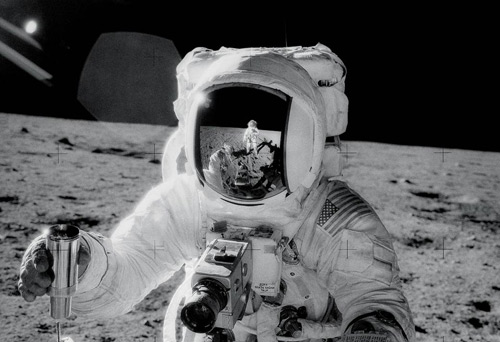Category Archives: AGU Fall Meeting 2015
Curiosity findings puzzle Mars rover team
By James Dacey in San Francisco
Rocks rich in silica have been discovered on the surface of Mars, bearing a resemblance to environments on Earth that support microbial life. It’s the latest finding from NASA’s Mars Curiosity rover, presented today in San Francisco at the annual meeting of the American Geophysical Union.
After landing in the Gale crater region of Mars in 2012, NASA’s car-sized rover spent the first couple of years exploring the planes around the elevated region known as Mount Sharp. Since 2014 the rover has started exploring the mountain itself, working its way up from the base.
View all posts by this author | View this author's profile
Preserving Apollo’s data legacy
By Louise Mayor in San Francisco
Day two of AGU Fall 2015 saw the likes of SpaceX CEO Elon Musk and NSF director France Córdova talking in rooms packed full of earth and space scientists. But what grabbed my attention was a short talk by Nancy Todd of NASA’s Astromaterials Acquisition and Curation Office.
NASA being NASA, I assumed that all its data from completed missions would by now have been digitized and made accessible. That, I learned, is not true – but Todd and her colleagues are on the case.
View all posts by this author | View this author's profile
Are reticent climate researchers ‘failing humanity’?

By James Dacey in San Francisco
Droves of delegates poured into the Moscone Center in San Francisco today for day one of AGU Fall 2015 – the largest Earth and space-science meeting in the world, with a whopping 24,000 delegates expected over the week. Having arrived from the UK on Saturday night, the jet-lag has kicked in with a vengeance today, so a couple of the conference coffees were definitely in order this morning. I’m just taking a break now after an interesting session about communicating climate change, and whether those researchers who don’t engage in the public debate are “failing humanity”.
The room was packed to the rafters, no doubt down to the profile of the speakers. First up was James Hansen, the former NASA scientist who has been outspoken in his criticism of the recent COP21 climate discussions, or at least the lack of concrete proposals to cut carbon emissions. Hansen restated his beef with the deal and argued that the only workable solution is for authorities to collect a carbon fee at source, such as charging domestic mines for the weight of carbon they sell. This, he believes, is the most effective way to make renewable energy and low-carbon options more viable. Not one to pull his punches, Hansen described US Energy Secretary Ernest Moniz’s idea that China will be able to curb much of its carbon missions using carbon capture and storage (CSS) technologies as “pure unadulterated bullshit”.
Designing smarter cities
By James Dacey in Berkeley, US
This weekend politicians at the COP21 summit in Paris signed a landmark legal agreement to keep global temperature rises at bay by curbing carbon emissions. The tricky next question of course is: how are we actually going to do this? In this short video, civil engineer Arpad Horvath of the University of California Berkeley explains that one of the aspects will be a fundamental rethink of our urban infrastructures. Horvath believes we need to move towards “smart cities” with smaller carbon footprints at all levels – from greener individual buildings, to more sustainable transport networks.

